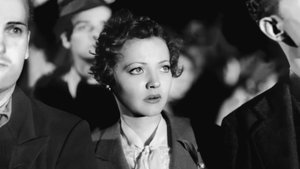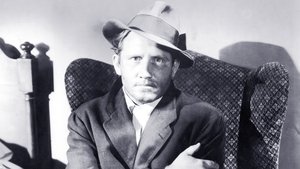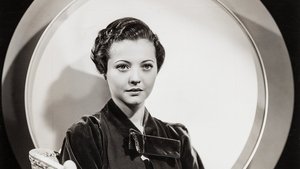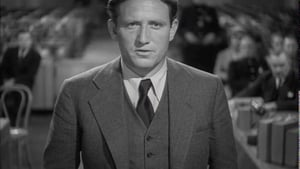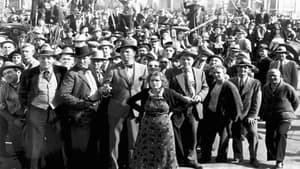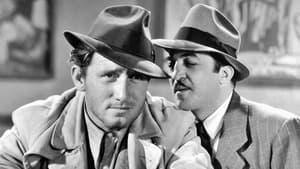Contact: [email protected]
Video Sources 0 Views
- Watch trailer
- Fury


Synopsis
Table of Contents
ToggleReview: Fury (1936) – A Gripping Tale of Mob Mentality and Justice

Introduction
“Fury” (1936) stands as a powerful indictment of mob violence and the erosion of justice in the face of public hysteria. In this article, we’ll delve into the significance of this early cinematic masterpiece, exploring its impact on audiences and its enduring relevance in today’s society.
Check The Full Colorized Movies List
Check Our Colorized Movies Trailer Channel
Understanding Fury 1936: Director, Cast, and Genre
Directed by the legendary Fritz Lang, “Fury” (1936) showcases his unparalleled skill in crafting suspenseful narratives that grip audiences from start to finish. The film features a stellar cast, including Spencer Tracy in a tour de force performance as a man wrongly accused of a crime, whose life is forever changed by the destructive forces of mob mentality. Blending elements of drama, thriller, and social commentary, “Fury” (1936) remains a timeless classic that continues to captivate audiences with its searing indictment of injustice and the power of the human spirit to endure.
Exploring the World of Fury 1936: Plot and Characters
At its core, “Fury” (1936) follows the harrowing journey of a man named Joe, played by Spencer Tracy, who finds himself at the mercy of a bloodthirsty mob after being falsely accused of a heinous crime. As he struggles to maintain his innocence and cling to his humanity in the face of overwhelming adversity, Joe becomes a symbol of resilience and defiance in the face of injustice. Along the way, he encounters a host of unforgettable characters who offer both solace and condemnation in equal measure, shedding light on the darkest corners of the human psyche.
The Art of Film Colorization
Film colorization serves as a transformative tool that enhances the visual experience of classic movies, breathing new life into timeless stories and captivating audiences with vibrant hues. By digitally adding color to black and white films, colorization allows viewers to immerse themselves in the rich tapestry of cinematic worlds, exploring every nuance and detail with fresh eyes and renewed appreciation.
Early Colored Films: A Brief History
The history of colored films traces its roots back to the early days of cinema, with filmmakers experimenting with various techniques to add color to their creations. From hand-tinted frames to early Technicolor processes, the evolution of colored film has been marked by innovation and ingenuity, paving the way for the development of modern colorization techniques that continue to captivate audiences to this day.
Fury 1936 and Its Early Colored Version
The decision to release “Fury” (1936) in a colorized format was met with both anticipation and trepidation. While some welcomed the opportunity to experience the film in vibrant color, others expressed concerns about the potential impact on its visual aesthetic. Nevertheless, the early colored version of “Fury” (1936) offers viewers a fresh perspective on the timeless tale of injustice and resilience, enhancing its emotional resonance and captivating audiences with its luminous beauty.
The Debate Over Film Colorization
The debate over film colorization continues to divide audiences and critics alike, with proponents praising its ability to breathe new life into classic movies and introduce them to a new generation of viewers, while detractors argue that it compromises the artistic integrity of the original work and diminishes its historical significance. As the debate rages on, filmmakers and audiences alike are left to ponder the merits and drawbacks of colorization in the ever-evolving landscape of cinema.
Examining Fury 1936 as an Early Colored Film
As with any colorized classic, the impact of colorization on “Fury” (1936) is a matter of personal interpretation. Some may argue that it enhances the film’s visual appeal and immerses viewers in its world, while others may feel that it detracts from the stark beauty of the original black and white version. Regardless of one’s stance on the issue, there’s no denying the enduring power of “Fury” (1936) as a timeless masterpiece that continues to captivate audiences with its gripping narrative and powerful performances.
Influence and Legacy: Fury 1936’s Impact on Cinema
“Fury” (1936) has left an indelible mark on the world of cinema, inspiring countless filmmakers and captivating audiences with its searing indictment of mob violence and the erosion of justice. From its unforgettable performances to its haunting imagery, the film continues to resonate with viewers of all ages, reaffirming its status as a timeless masterpiece of the thriller genre.
Director’s Cinematic Legacy: Beyond Fury 1936
Fritz Lang’s influence extends far beyond “Fury” (1936), with a diverse body of work that continues to captivate audiences around the globe. From “Metropolis” to “M,” Lang’s films are celebrated for their bold vision, provocative themes, and groundbreaking visual style, solidifying his legacy as one of the preeminent directors of the 20th century. Through his pioneering work, Lang has left an indelible imprint on the world of cinema, inspiring generations of filmmakers to explore the darker corners of the human psyche and push the boundaries of storytelling.
Themes Explored in Fury 1936
“Fury” (1936) explores a myriad of themes, from the destructive power of mob mentality to the resilience of the human spirit in the face of injustice. Through its unflinching portrayal of a man’s struggle for survival in the face of overwhelming adversity, the film invites viewers to confront the darkest aspects of human nature and contemplate the timeless question of what it means to be truly free.
Reception and Controversy Surrounding Fury 1936
Upon its release, “Fury” (1936) received widespread critical acclaim, with many praising its taut suspense, thought-provoking themes, and powerhouse performances. However, the decision to release the film in a colorized format sparked debate among purists, reigniting the age-old discussion surrounding film preservation and artistic integrity. Despite the controversy, “Fury” (1936) remains a beloved classic that continues to resonate with audiences of all ages, reaffirming its status as a timeless masterpiece of the thriller genre.
Where to Watch Fury 1936 Online
For those eager to experience the timeless power of “Fury” (1936), the film is readily available on popular streaming platforms such as Netflix, Amazon Prime, and Hulu. Whether you choose to watch it in its original black and white format or the early colored version, “Fury” (1936) promises to grip you from start to finish with its unrelenting suspense and thought-provoking themes.
FAQs About Fury 1936
Q: Is “Fury” (1936) based on a true story? A: No, “Fury” (1936) is a fictional tale crafted by screenwriter Norman Krasna, who drew inspiration from real-life incidents of mob violence and injustice.
Q: Who are the main actors in “Fury” (1936)? A: “Fury” (1936) features a standout performance by Spencer Tracy in the lead role, supported by a talented ensemble cast that includes Sylvia Sidney, Walter Abel, and Bruce Cabot.
Q: What awards did “Fury” (1936) win? A: While “Fury” (1936) did not win any major awards, it received critical acclaim for its powerful performances and gripping storytelling.
Q: Why was “Fury” (1936) released in a colorized format? A: The decision to release “Fury” (1936) in color was made to introduce the film to a new generation of viewers and enhance its visual appeal for modern audiences. While the choice to colorize the film sparked debate among purists, it ultimately allowed “Fury” (1936) to reach a wider audience and ensure its continued relevance in the annals of cinematic history.
Conclusion
“Fury” (1936) remains a timeless masterpiece that continues to captivate audiences with its gripping narrative, powerful performances, and thought-provoking themes. Whether viewed in its original black and white format or the early colored version, the film stands as a testament to the enduring power of cinema to confront the darkest aspects of human nature and inspire us to strive for justice and redemption in a world fraught with injustice and uncertainty.
